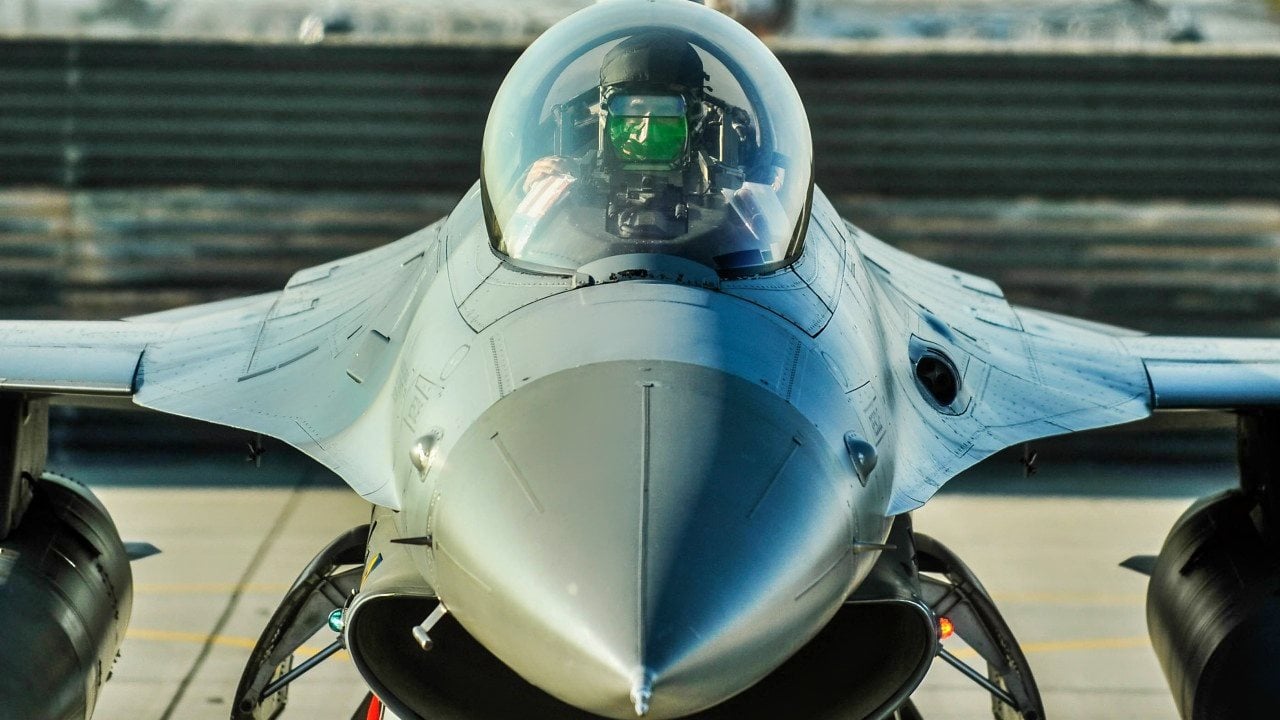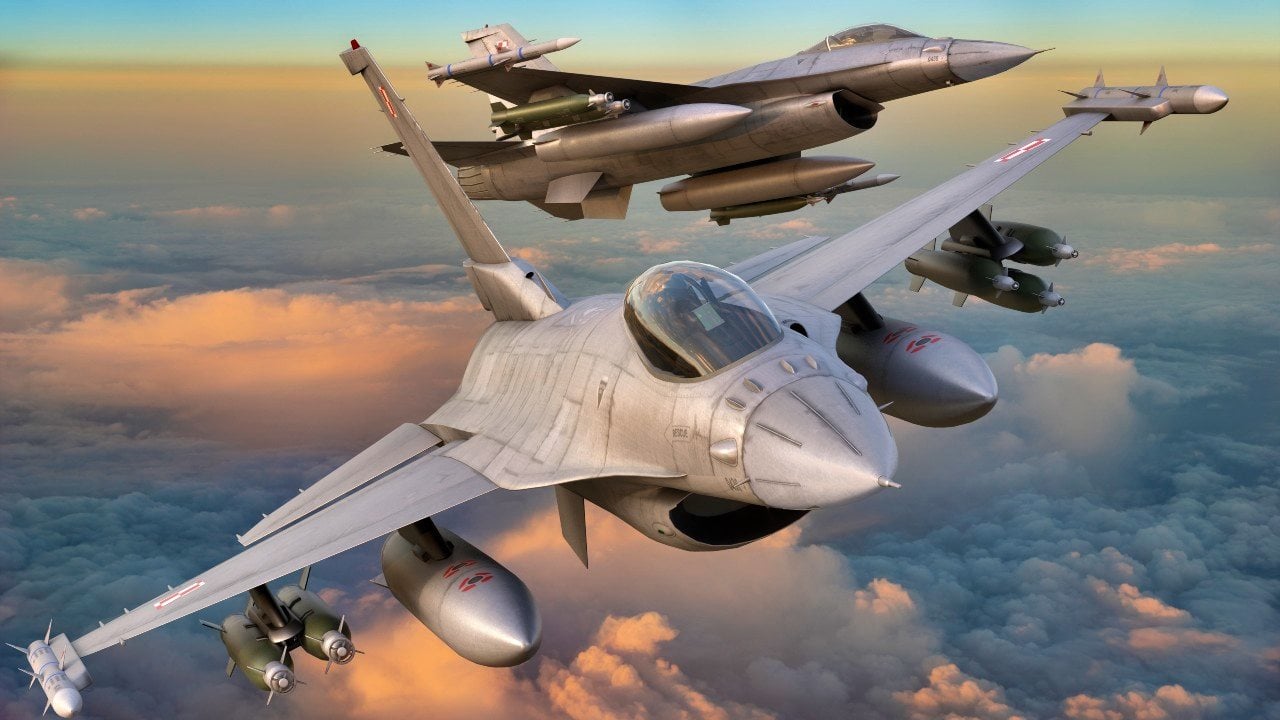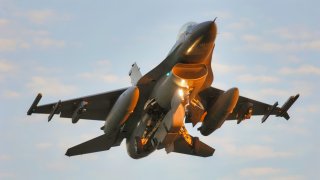Ukraine Will Soon Have a Fleet of 85 F-16 Fighters to Battle Russia
The Ukrainian Air Force, initially reliant on an antiquated fleet of Soviet-era fighter jets, is on the verge of receiving significant reinforcements from NATO countries, including around eighty-five F-16 Fighting Falcons from the Netherlands, Norway, and Denmark, and an unspecified number of Dassault Mirage 2000D fighter jets from France.
Summary and Key Points: Nearly 900 days into Russia's full-scale invasion of Ukraine, the skies over the battlefield remain fiercely contested, prolonging the conflict. The Ukrainian Air Force, initially reliant on an antiquated fleet of Soviet-era fighter jets, is on the verge of receiving significant reinforcements from NATO countries, including around eighty-five F-16 Fighting Falcons from the Netherlands, Norway, and Denmark, and an unspecified number of Dassault Mirage 2000D fighter jets from France.

-This influx of modern Western aircraft, coupled with intensified drone strikes on Russian air defenses, aims to achieve air superiority, potentially paving the way for an operational breakthrough on the ground.
-Training and logistical support from the UK and US are also bolstering Ukraine's aerial capabilities. Establishing control of the skies is seen as a crucial step towards ending the prolonged conflict.
Ukraine Prepares to Transform Air Warfare with F-16s and Dassault Mirages
Nearly 900 days after Russia’s full-scale invasion of Ukraine, the skies over the battlefield remain contested. This is the main reason why the war has dragged on for so long.
A lack of air superiority means that the Ukrainian Air Force and Russian Aerospace Forces haven’t been able to use aircraft consistently to take out ground targets and thus pave the way for an operational breakthrough somewhere along the contact line.
But now, Ukraine seems determined to change that and wrestle control of the skies.
F-16 Fighting Falcons, Dassault Mirages, Drones, and Deep Strikes
When the war began, the Ukrainian Air Force operated a largely antiquated fleet of Soviet- and Russian-made fighter jets. But now, Kyiv is getting close to receiving dozens of F-16 Fighting Falcon and Dassault Mirage fighter jets from several NATO countries. The addition of these Western combat aircraft will most likely change the dynamics over the skies of Ukraine and could lead to progress on the ground.
As it stands, Ukraine is set to receive approximately eighty-five F-16 fighter jets. Specifically, the Netherlands has committed up to forty-two F-16 Fighting Falcons, while Norway has committed to sending twenty-two and Denmark nineteen.
However, the type and condition of each aircraft varies. As a result, it is very likely that a smaller number of these aircraft will be operational, with the rest acting as a ready reserve of spare parts. In addition to the aircraft, several other countries, including the United Kingdom and the United States, have been providing training and logistical support to the Ukrainian Air Force.
The Ukrainian Air Force expects to receive a yet unspecified number of Dassault Mirage 2000D fighter jets from France. In June, French president Emmanuel Macron announced his decision to transfer the combat aircraft to Ukraine to help it win control of the skies.
In the meantime, the Ukrainian military has been using suicide drones to target and harass Russian air defenses with the goal of creating a gap that could be exploited later on by Kyiv’s new fighter jets.
“Ukrainian drone strikes deep within Russia continue to pressure Russia's air defense umbrella and force the Russian military command to prioritize allocating limited air defense assets to cover what it deems to be high-value targets,” the Institute for the Study of War assessed
in a recent operational estimate of the war.

F-16 Fighting Falcons and Dassault Mirage 2000D fighter jets equipped with modern Western munitions would have an easier job establishing air superiority and taking out high value targets if the Russian air defense umbrella is sufficiently weakened.
“Ukrainian forces continue targeting Russian air defense systems in occupied Ukraine and in Russia’s border areas to set conditions to field F-16 fighter jets following their anticipated Summer-Fall 2024 arrival to Ukraine,” the Institute for the Study of War added.
Taking control of the skies is an important first step in creating the conditions for an operational breakthrough on the ground that could finally end this brutal conflict.
About the Author:
Stavros Atlamazoglou is a seasoned defense journalist specializing in special operations and a Hellenic Army veteran (national service with the 575th Marine Battalion and Army HQ). He holds a BA from Johns Hopkins University and an MA from Johns Hopkins’ School of Advanced International Studies (SAIS). His work has been featured in Business Insider, Sandboxx, and SOFREP.
All images are Creative Commons and/or Shutterstock.


